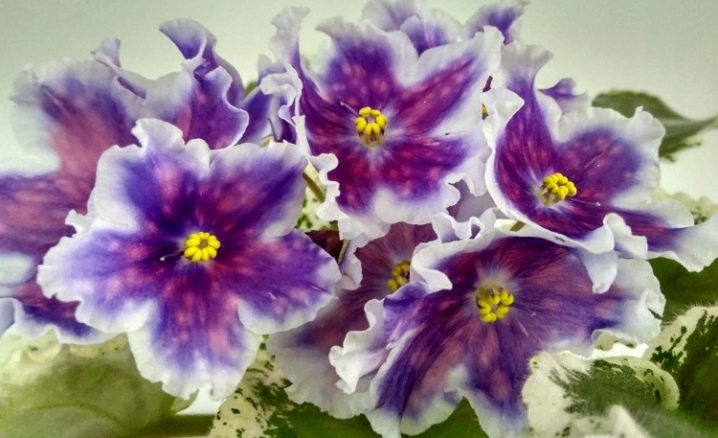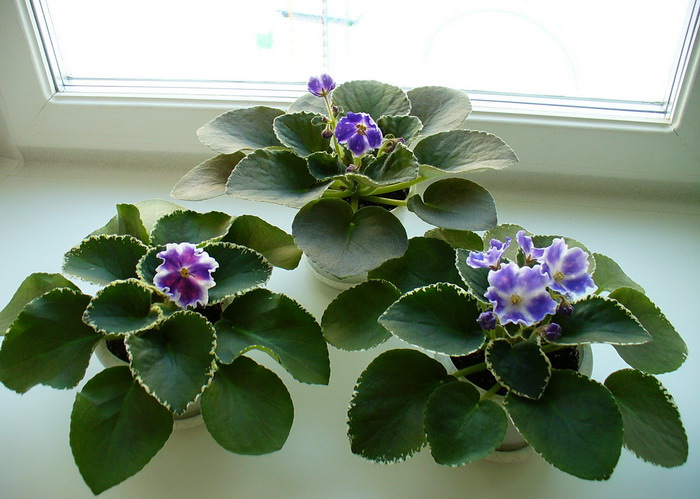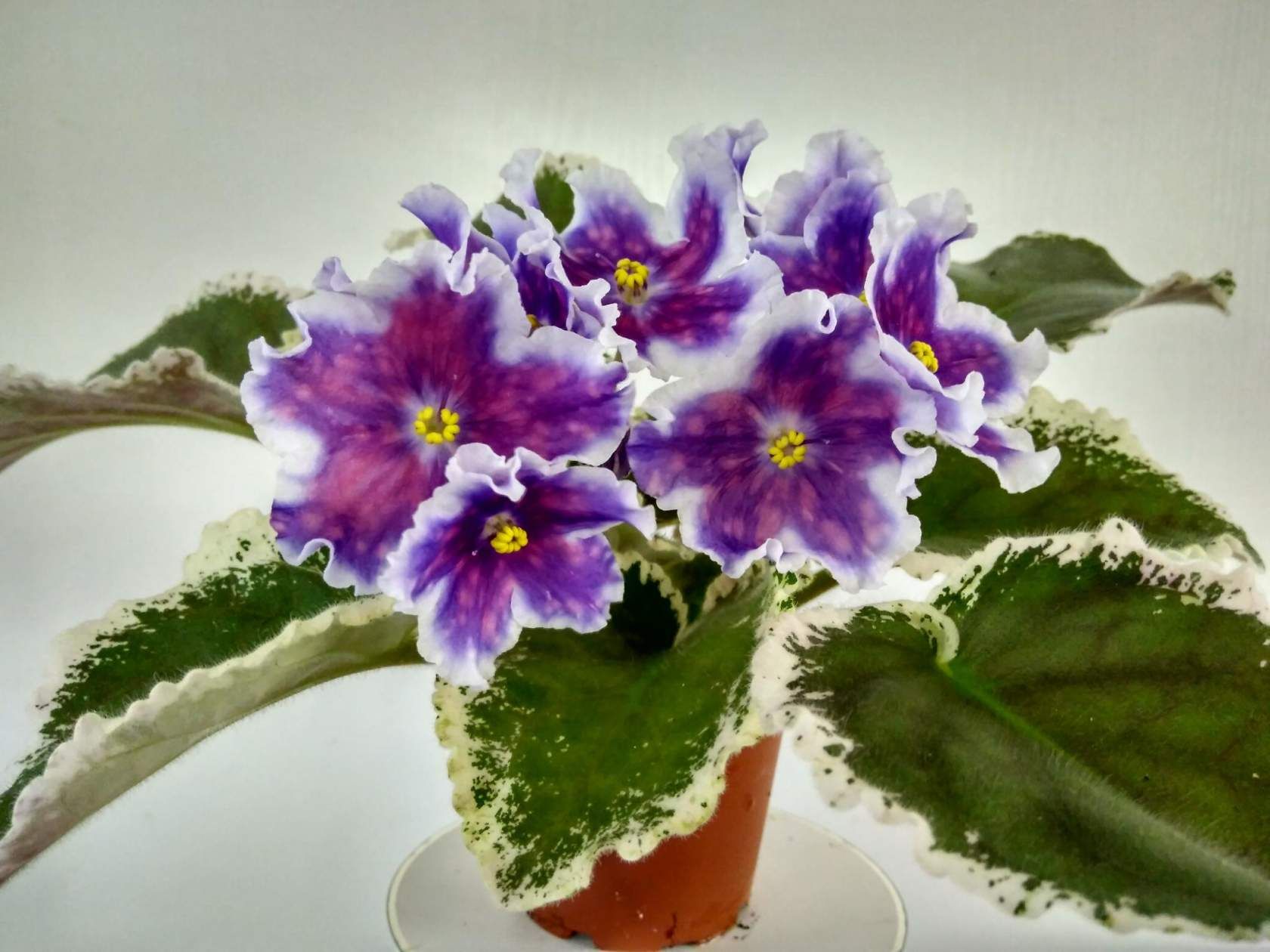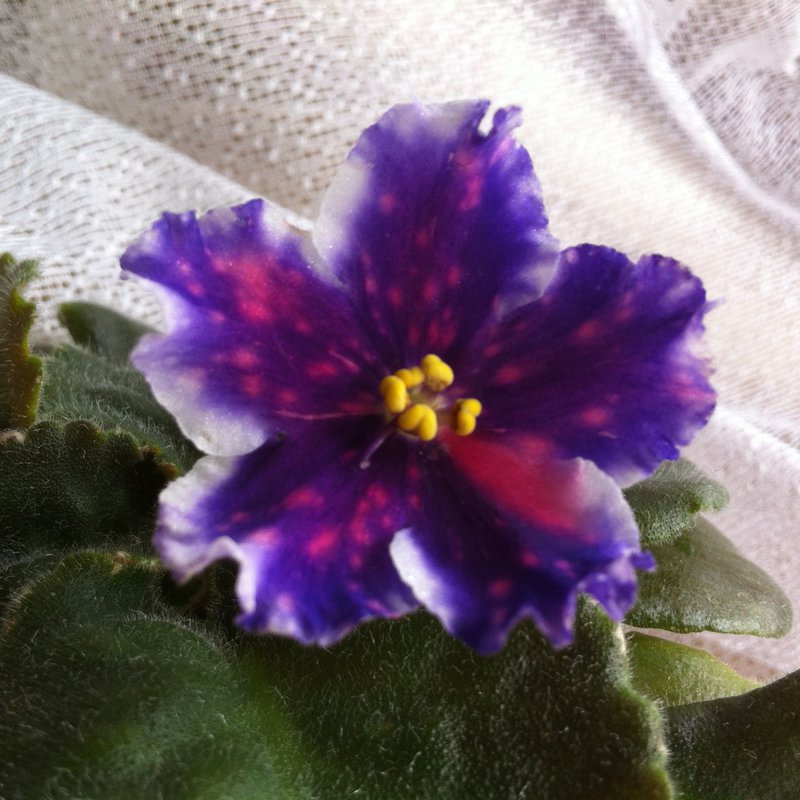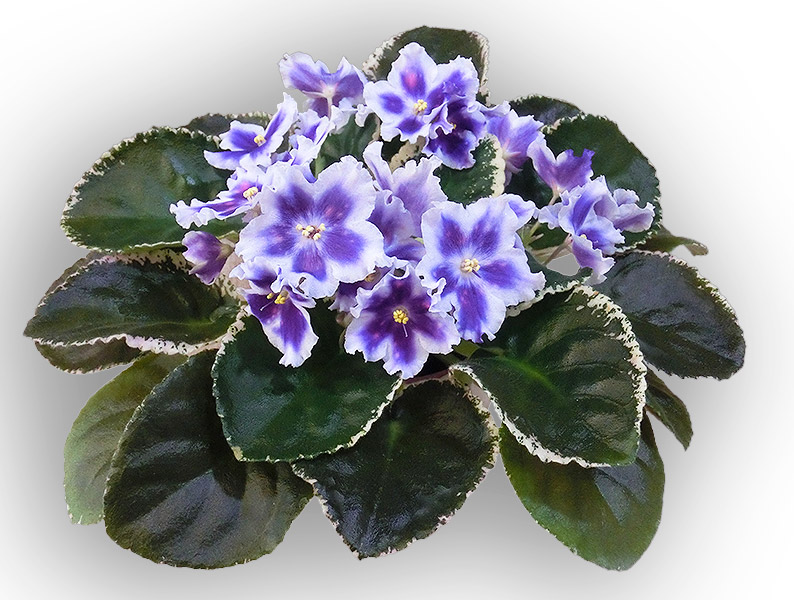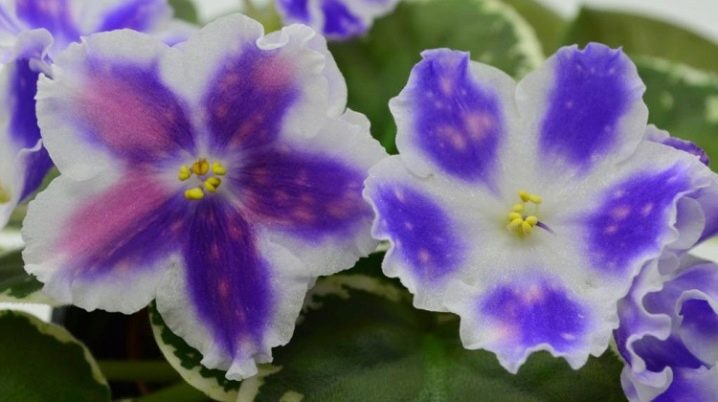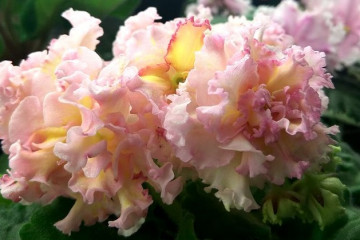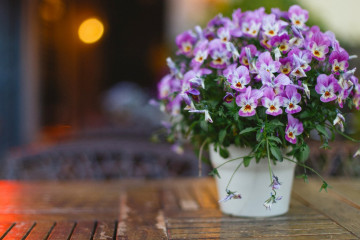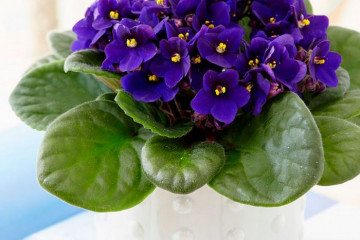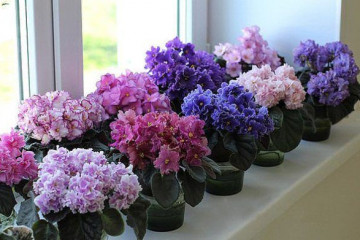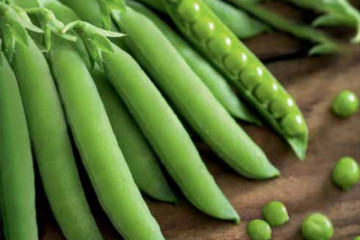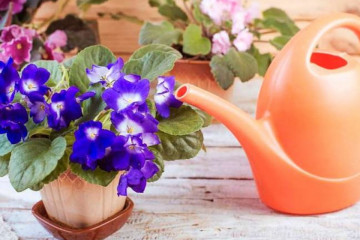Violet VaT King Peas - plant features
Content:
- Violet appearance VaT Tsar Pea
- Biography facts and achievements of the breeder Tatyana Valkova
- Description and characteristic features of VaT varieties
- Features of caring for a violet King Peas at home
- Violet flowering, care features
- Breeding methods of Saintpaulia VaT Tsar Peas
- Transplant after purchase and during reproduction
- Possible growing problems
It is difficult to find a florist who would be left indifferent by a room violet. This delicate flowering plant can decorate any room, giving it a special comfort and home atmosphere.
At the present time, breeders have bred so many varieties of various shapes and colors that it is sometimes very difficult to make a choice when buying a violet. But the violet VaT Tsar Peas, even among such abundance, invariably attracts the eye with its unusual colors and decorative leaves.
Violet appearance VaT Tsar Pea
Saintpaulia VaT King Peas does not belong to the Violet family, as many think, but to the Gesnerievs. However, due to the great similarity of the flowers of these plants, saintpaulias are very often called violets.
Violet VaT Tsar Pea is distinguished by spectacular white flowers with a purple fingerprint-like spot on each petal. The purple spots are strewn with pink specks, reminiscent of peas. Flowers of rather large sizes are collected in a hat, abundant flowering lasts a long time.
The foliage of the plants is large, beautiful, with a light cream border, which gives it a special decorative effect.
Biography facts and achievements of the breeder Tatyana Valkova
Breeder Tatyana Valkova has devoted many years to growing plants. She bred various varieties of violets (Sun in the palm of your hand, Dark wine, Alien, Snow White, Bird of Happiness).
Tatyana lives in Shakhtyorsk, in the Donbass, but even the hostilities in this territory did not force her to give up her hobby. Despite everything, she continues her work and participates in many exhibitions.
Description and characteristic features of VaT varieties
Among the varieties bred by Tatyana Valkova, the following deserve special attention:
- Violet VaT Africa. It is distinguished by a very dark purple shade of flowers, in which the edges are strongly corrugated.
- Mystic. The flowers are large, in the form of stars, with a pink-blue pattern resembling frosty.
- Pulsar. Flowers in the form of large white stars with an abundant crimson pattern and splashes on it.
- Sun in the palm of your hand. White flowers, due to the strong doubleness, seem fluffy.
- Poodle. Large and voluminous flowers with a blue pattern on a purple-pink surface due to increased doubleness.
- Peony. Large pink flower with white wavy edges.
- Dark wine. The flowers are large, dark burgundy with a white border.
- Aelita. Large pink double flowers with a wavy crimson border.
- Carmelita. Large flowers in the form of stars, plum shade with a white border around the edge, dark foliage.
- Maleficent. Flowers are very double, similar to roses, dark plum color.
Features of caring for a violet King Peas at home
In order for the flowering to be lush and long-lasting, and the flowers themselves to be large, caring for a violet requires following simple rules.
Temperature regime
Violet VaT Tsar Peas prefers a well-heated room (the temperature should be kept at 20-23 ° C). In a cool room, the flowers will be too pale. Drafts can be detrimental to the plant, so they should be avoided.
Lighting
The beauty of Saintpaulia loves continuous lighting (on average, about 12-14 hours a day), but the light must be diffused. In no case should you leave flowerpots with a plant in direct sunlight - this can be detrimental to it.
Watering
Watering the VaT Tsar Peas violet is necessary often enough, but with a small amount of water, especially when it comes to young plants with a poorly developed root system.
In the spring-summer period, it is advisable to water the flowers in the morning, and in the autumn-winter period, daytime watering is also allowed. It is better to use settled water, it must be soft and at room temperature.
During the watering process, it is important not to let the water get on the foliage or flower rosettes. Some growers irrigate through a pallet. However, in this case, it is necessary to remove the remaining water in time in order to avoid decay of the root system.
Humidity
Saintpaulia needs humidified air, but in no case should you use a spray for this. Usually, a pot with a plant is simply placed on wet pebbles or a container of water is placed next to it.
Once a month, a violet can be given a shower to remove accumulated dust, however, after the procedure, it is imperative to remove the remaining moisture from the leaves that does not glass on its own.
Priming
As a soil, you can use a ready-made substrate for Saintpaulias, which is sold in specialized stores. Some growers themselves mix leafy, coniferous soil, peat and turf, adding a baking powder (perlite, vermiculite, sphagnum moss).
Top dressing
Violet VaT Tsar Peas needs fertilization during the active growing season and during the formation of flowers. It is not necessary to do this in autumn and winter. It is important to take into account that the nitrogen prevailing in complex fertilization is necessary for young plants, as it contributes to the growth of green mass. Older plants will need phosphorus and potassium for successful flowering.
Violet flowering, care features
In order for the violet to bloom longer, you need to provide it with the appropriate conditions. It is best to place it in a sunny place, but not under scorching rays or in a draft.
Watering should be regular, but it is impossible to overmoisten the substrate. If you periodically feed the plant with phosphorus-potassium fertilizers, it will delight you with its colorful flowers for a long time.
Breeding methods of Saintpaulia VaT Tsar Peas
Violet VaT King Peas are propagated using leaf cuttings. To do this, in spring or early summer, healthy young medium-sized leaves are cut from the plant and rooted.
Cuttings are rooted in water, special soil for grafting, in sphagnum moss or agroperlite. Most of the seedlings are given by germination in the substrate.
Cuttings planted in small plastic containers should be placed in greenhouse conditions. To do this, the pots are placed in a transparent container, covered with polyethylene or an ordinary plastic transparent lid from under the cake. This will provide the seedlings with sufficient moisture.
Greenhouses should be placed in a sunny location, but not in direct sunlight. If there is a lack of lighting, it is added. In general, cuttings need to be provided with light, warmth and humidity - these are the main conditions for the rapid hatching of "babies".
Transplant after purchase and during reproduction
The more spacious the saintpaulia root system in the pot, the less chances that the flowering will be lush. The capacity should be small, ideally three times less than the plant's outlet. Better if it is a clay or plastic pot.
The violet should be transplanted and the substrate should be changed every 2-3 years. After the purchase, you need to give the plant time to adapt to the new conditions, and only after 2-3 weeks you can transplant it.
Possible growing problems
Often, pests and diseases overtake the plant. The prerequisites for their appearance are improper care and violation of conditions of detention.
Diseases
Often the violet suffers from root rot. This is a consequence of keeping the plant at a low temperature and an excess of moisture in the substrate.
A dangerous disease is vascular bacteriosis, which develops at high air temperatures and is characterized by transience. The leaves begin to blacken and rot.
Powdery mildew can slow down the development and flowering of a plant or even destroy it. With this fungal disease, the leaves and shoots begin to become covered with a white coating.
Pests
Insects can damage the violet - aphids, scale insects, thrips, worms and ticks. By infecting the plant and feeding on its sap, they interfere with its normal development. If left untreated, the flower may die.
Signs of improper care
If the conditions of care are violated, the appearance of the leaves and shoots of the violet changes. In a healthy plant, the foliage is juicy, elastic, without traces of sunburn and damage by parasites and diseases. Drooping, rotten leaves, bloom on them or a prolonged absence of flowering speak of problems.
Violet VaT Tsar Peas is a breeding variety of Saintpaulia. It is a lush blooming plant with large flowers and decoratively framed foliage. A characteristic feature of the violet is the color of the flowers: large purple spots resembling a fingerprint are located on the white petals, and small pink spots in the form of peas are scattered over them.
Fialka vat Tsar Pea decorates any room and attracts attention during flowering. It is not difficult to take care of the plant, you just need to adhere to the basic recommendations.
